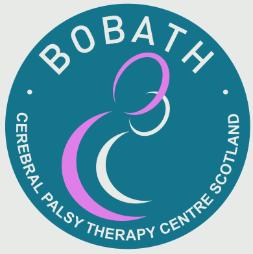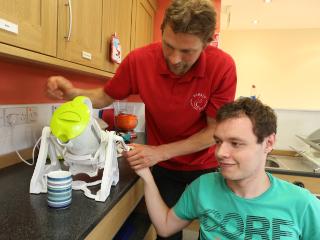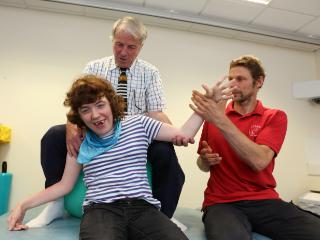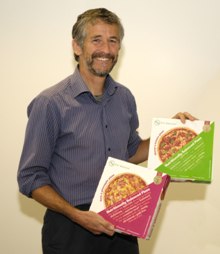Working with small to medium size businesses (SMEs)
The University of Glasgow provides support and expertise to all sizes and types of company. The SME businesses below have worked with our academic teams on a wide range of projects.
Collagen Solutions
Collagen Solutions (UK) Ltd (previously Collbio) is a privately owned, Glasgow-based  biomaterials company serving the global diagnostics, medical devices and regenerative medicine sectors. They have been producing collagen-based products for several years and the company directors have many years’ expertise in collagen extraction and production.
biomaterials company serving the global diagnostics, medical devices and regenerative medicine sectors. They have been producing collagen-based products for several years and the company directors have many years’ expertise in collagen extraction and production.
Collagen Solutions developed a new acid solubilised Type I collagen. To determine whether it could be used in culture models, Dr Stewart White, CEO of Collagen Solutions approached the University of Glasgow.
Their collaboration was with Dr Catherine Berry of the Institute of Molecular Cell & Systems Biology in MVLS (The College of Medical, Veterinary & Life Sciences). The generation of tissue engineered, cell culture models which can be used as tissue equivalents is central to Dr Berry’s research in The Centre for Cell Engineering.
Dr Catherine Berry assessed the collagen’s gelling potential, followed by cell viability and ultra-structure within the collagen gel via fluorescence micrscopy, scanning electron microscopy (SEM), and transmission electron microscopy (TEM).
Dr Berry’s protocols were that the collagen product must:
• Gel at pH 7/37oC
• Support a viable cell population with the gelled collagen network
In conclusion, the collagen Solutions Type 1 collagen solution gelled appropriately and appeared to support cell viability and growth and all the original project goals were achieved.
Dr Stewart White, CEO of Collagen Solutions commented:
“Collagen gel models are highly desirable in cell biology studies and now that we have the evidence that our Type 1 collagen is effective, we can scale up production and take it to market. We hope to have an ongoing relationship with Dr Berry and her team and have several future R&D projects in discussion.”
Plan Bee
 As an ethical, sustainable eco-innovation business, Plan Bee provides a solution for organisations to enhance their sustainable responsibilities through a fully managed beehive service. They help companies improve their green credentials and actively show their commitment to the environment and local communities.
As an ethical, sustainable eco-innovation business, Plan Bee provides a solution for organisations to enhance their sustainable responsibilities through a fully managed beehive service. They help companies improve their green credentials and actively show their commitment to the environment and local communities.
From their beehives, they produce premium grade bespoke honey from quintessential locations around Scotland. The important differentiator from competitors is that their honey is cold extracted, minimally filtered and unpasteurized which is sustainable in its production. They also sell products of the hive including pollen, propolis and honeycomb.

Warren Bader, CEO of Plan Bee worked with Dr Emilie Combet in Human Nutrition at the University of Glasgow, part of the College of Medicine, Veterinary & Life Sciences. This research project explored the bioactive properties of Scottish honey, pollen and propolis and researched their natural health and medicinal properties.
As well as a literature review, characterisation of Scottish honey was carried out using advanced chromatographic analysis. Laboratory tests were also carried out aiming to characterise the Scottish honey in relation to its free radical scavenging and antibacterial activities. The resulting research demonstrated that Heather honeys displayed interesting characteristics in terms of glycation and phenolic contents.
The research results were also compared with Manuka honey, which currently dominates the honey based health market. Manuka honey has become a global brand, and is now a selling point when found in many products, such as; shampoos, teas, high priced natural medicinal products, and skin-care products. Manuka honey’s global exports had a value of $70 million in 2010.
 Warren Bader of Plan Bee comments:
Warren Bader of Plan Bee comments:
“If a sufficient body of research could be found for the health benefits of heather honey, there is the potential to create a similar market and hence boost the Scottish economy whilst simultaneously championing biodiversity through repopulating the bees.
In the long term future, there is a possibility of registering heather honey as a solely Scottish product in a similar way that Scottish whisky has been registered”.
Soilessentials
 Soilessentials is the leading Precision Agriculture specialist in Scotland and offers a full range of precision farming services and products throughout the UK.
Soilessentials is the leading Precision Agriculture specialist in Scotland and offers a full range of precision farming services and products throughout the UK.
Potato yields have stagnated in the past 10 years, while processors and consumers are ever more demanding of quality. Therefore there is a compelling need for farmers to increase marketable yield.
Jim Wilson, Managing Director of Soilessentials worked with the College of Science & Engineering on a research project to evaluate how to meet these needs. The preliminary research was led by Dr Paul Siebert of the School of Computing Science.
Jim commented:
“This investigation was the first step in our plans for the future of Soilessentials. The total value of the UK potato industry at the farm gate is £947m so even a 1% crop waste would result in a potential return to the industry of £10m”.
Visit the Soilessentials website

Ingenious Audio


Director John Crawford explained that Ingenious Audio’s product line is focused around harnessing commercial off-the-shelf 802.11 WiFi hardware for musical interconnection.
His project with Dr John Williamson of the School of Computing Science at the University of Glasgow was to address the quality of service issues that such hardware imposes, in a way that meets the demanding requirements of live musical performance. This requires ultra-lowlatency response, but cannot afford any audible drop-outs or glitches in the stream.
CAPSLA (Context Aware Signal Processing for Low-latency Audio) will examine the implementation of advanced signal processing software for seamless interpolation of packet drops using context-aware processing, exploiting the highly-regular nature of unprocessed string instrument audio streams. This will allow musically acceptable performance even in environments with rapidly varying-signal strength or substantial RFI interference in the 2.4Ghz band.
The core remit of the project was to optimise a real time audio signal being wirelessly transmitted
between two devices. The aims and outcomes of the project are below.
Task 1: To identify issues affecting sound quality
Outcome: This project has provided a step change in the ability to benchmark and analyse this system. Crucially it has identified a further key performance area to optimise and this issue is now well on the way to resolution by the Ingenious Audio team.
Task 2: To refine the platform software to minimise audio quality issues
Outcome: This task has been very well progressed and has formed the basis of a substantive redevelopment of core IP blocks and general performance improvement which has increased operation, stability and control
Task 3: To apply intelligent signal processing to mitigate audio quality issues when they are unavoidable.
Outcome: The team has assessed a range of processing options, each with costs and trade-offs. However, before the ideal processing solution can be selected the team needs to first minimise the underlying risk of issues to compensate for, and to do that we must resolve the newly identified issue. Once this is resolved a procession option can be developed, tuned and implemented
The project was an initial step for Ingenious Audio towards more detailed collaborations in the
intelligent signal processing realm, particularly for expanding the range of musical applications of their product line (e.g. beyond guitar-based products).
John Crawford’s view of the final outcome is:
“The project has been of massive net benefit – however it has returned slightly different deliverables than previously planned. The work has progressed Ingenious Audio significantly towards a viable commercial product for the international market and has also provided us with a clear plan of forward action, focussed on the first product launch this year and several follow-on product developments”.
Visit the Ingenious Audio website
PRODUCT LAUNCH: Visit the Jack wireless guitar cable and see the product in action
Read The Telegraph article here 3 Feb 2015
New gadget will 'kill the audio cable' and create everyday guitar heroes
A Scottish start-up has invented a Wi-Fi device it claims gives garage bands that stadium sound”
 |
 |
 |
 |
Sciencesoft
 Sciencesoft is an award winning company specialising in state-of-the-art 3D visualisation and data analysis software for reservoir engineers in the oil and gas industry. Its products are used by over 180 companies in 80 countries worldwide and 90% of its sales are overseas.
Sciencesoft is an award winning company specialising in state-of-the-art 3D visualisation and data analysis software for reservoir engineers in the oil and gas industry. Its products are used by over 180 companies in 80 countries worldwide and 90% of its sales are overseas.
With the objective of extending the scope of their project range, Dr Lindsay Wood, Sciencesoft’s Director of Research & Development, enlisted the skills of Professor Christopher Pearce, who is an expert in the field of Computational Mechanics, in the School of Engineering within the College of Science & Engineering at the University of Glasgow.
Sciencesoft’s particular interest was in developing a flexible software package for calculating how much unrecovered oil was left in mature oil fields. Hand-building specialist simulator models for a single well could take 3-4 weeks, but by automating the process, Sciencesoft believed they could reduce this to around 20 minutes and offer this as a commercial solution to oil & gas companies.
Professor Christopher Pearce, with his specific experience in interpolation methods and kriging (estimating values at locations which have not been mapped) reported on the feasibility of such a flexible piece of software.
Dr Lindsay Wood of Sciencesoft commented:
‘The result of the report allowed us to adapt the kriging tests performed in the study and use these as a basis for building this methodology into a new software product. By drawing on the specialist technical expertise of Professor Pearce, we were able to significantly accelerate our R&D activity and develop and launch a commercial product at least a year ahead of our original timeline.’

Bobath Scotland
 Bobath Scotland is a Scottish charity with a long history of improving the quality of life for people in Scotland with cerebral palsy (CP).
Bobath Scotland is a Scottish charity with a long history of improving the quality of life for people in Scotland with cerebral palsy (CP).
It achieves this by providing specialist treatment at its Glasgow-based Therapy Centre, offering knowledge and expertise to analyse an individual's skills and suggest ways of enhancing his/her abilities.
Whilst Bobath has extensive contacts and sees a large number of clients, until recently most of its services have been targeted at children, and it has worked almost exclusively with paediatric NHS Services.
As a result of many inquiries from adults with CP seeking its help, however, it became apparent to Bobath that there were no specialist therapeutic services in Scotland for people with CP aged 18 and older.
After a 2 year pilot service aimed at adults with CP, Bobath state that it is clear there is profound requirement for such therapy and support.
Bobath worked with Professor Nicholas Watson and Dr Kevin Paterson from the Strathclyde Centre for Disability Research (SCDR) in the Institute for Health and Wellbeing, School of Social and Political Sciences at the University of Glasgow. Prof Watson is an established expert on disability and disability related issues.
Prof Watson and his team examined both the objective measures taken by Bobath’s therapists during the course of therapy and documented the perceptions and experiences of those who are using the service. The result was a full report evaluating the delivery and results of Bobath’s current adult CP therapy programme. The report also analysed the usefulness, effectiveness and patient reaction to this treatment.
The resultant learning provided essential evidence supporting Bobath’s approach to funders to continue its research and expand its adult services.
Visit the Strathyclyde Centre for Disability Research website


HMMH (Scotland) Ltd
Scotland has a wonderful ‘natural larder’, incredible associations with landscape and clean environment, fantastic producers and products and can claim to be one of the world’s great lands of food and drink. We have Scotch whisky, Scottish salmon, Scotch beef and other iconic Scottish products. These names are seen internationally as hallmarks of quality.
Yet currently, there are few recognised ways of commercially proving the authenticity and provenance. The combination of increasingly globalised food supply networks, coupled with consumption and economic pattern changes, population pressure and the projected impact of climate change on food production places food authenticity under unprecedented and ongoing pressure
In the context of this and the high importance of the sector, HMMH (Scotland) Ltd aims to grow and diversify their business by creating a testing system that will assure buyers in the food chain supply that the products they are buying are from the geographic areas they claim and also meet defined standards.
Sandy Duncan, Director of HMMH (Scotland) Limited, worked alongside a University of Glasgow research team on an initial scoping and feasibility study. The research team was led by Professor David Sanderson, Professor of Environmental Physics and Dr Lorna Carmichael and SUERC (Scottish Universities Environmental Research Centre). The study looked at food authenticity, it examined needs and opportunities for new analytical approaches to food authenticity analysis and also potential delivery methods.
This included desktop scoping to understand the landscape and opportunity for the provision of authenticity testing and possible models for delivery. Development and testing was also explored with the aim of developing a model framework for third party sampling organisation integration with the food and drink supply chain.
The results of this intial study will be used by HMMH(Scotland)Ltd as a springboard to further research and development. This will consist of the development of an authenticity testing service and the opportunity to explore a third party testing offer. Successful development of such a model within Scotland has the potential to establish a template which could be exported globally, as well as providing benefits to consumers and food industry
Beyond that, there is the opportunity to boost Scotland’s food and drink industry by HMMH (Scotland) Ltd offeringways of independently evidencing authenticity, helping to reduce the risk of food fraud and the resulting harm to the reputation of Scottish produced foods.
Linknode
The Linknode team, led by Director Crispin Hoult, specialises in mobile 3D visualisation applications (apps) and services with specialism in the convergence of location, sensors, devices and model data for geospatial augmented reality (AR).
One of Linknode’s products is a mobile app that allows for a new way of doing Visual Impact Assessments (VIAs).
A VIA is a formal requirement for many proposed building developments where the development is likely to significantly affect the way a particular area looks. UK Guidelines on how to carry these out are set by organisations such as the Landscape Institute and Scottish National Heritage. Developments involving renewable energy generators, such as windfarms, are of particular interest at the moment, with the joint pressures of reducing reliance on hydrocarbons for fuel and nature conservation initiatives. VIAs include visual materials such as maps, historical documents, photomontages of how the area currently is and photomontages of how the area would appear following on from the proposed development.
Linknode’s VIA product allows for a new way of doing VIAs. Instead of looking at digitally altered static photographs or videos, the proposed development can be viewed ‘in real time’ using a mobile device with a 3D model digitally augmented into the scene.
Their research project, with Dr David Simmons of the School of Psychology at the University of Glasgow, was to explore whether this technique (augmented reality) would improve the quality or understanding of VIAs and whether people would trust it more or less than static photographs or videos. The title of the project was ‘Assessing Visual Interpretation Media for Accuracy and Trust’
The research tested participants from a range of ages and backgrounds rating six different VIA simulations, including the Linknode augmented reality VIA product.
The ratings included specific aspects such as their clarity, ease of use, trustworthiness and effectiveness. The Linknode app was generally favoured by most of the participants over the more well-established simulation techniques. The over-riding reason given for this choice was the ability to see the simulated wind turbine moving in the precise location and from the same location as if it were really present.

This may be the first time that a simulated VIA has been carried out to test different presentation techniques and could set up a paradigm for future use. A paper is being prepared for the international journal ‘Energy’ to describe the technique used and the results.

Linknode Director Crispin Hoult comments on the collaboration: “Working with the University of Glasgow provided a platform for rigorous, independent assessment of our solution. The academic team brought a level of expertise and experience and took the time to understand the challenge and determine the best approach to evaluate the experiment. I believe this is the first time a comparison of presentation media has been backed up with an approach delivering statistical significance in the results.”

Basewarp / Bubbal
 Basewarp Ltd approached the Encompass team to discuss a smart content platform they had developed that allowed users to discover important content while on the move with their smartphones. The service, called Bubbal, is a location-based app, which makes it easy to publish content to a place and allows the right content to find the right person at right time. This means that as you walk down the street, Bubbal will be bringing you content that is most likely to interest you, even if you are not looking at your phone. It uses your context, such as your location or proximity to iBeacons, together with your interests and usage patterns to determine what content you will like most using a predictive content algorithm. When Bubbal thinks there is something you will like, you get a buzz notification to let you know it’s found something for you.
Basewarp Ltd approached the Encompass team to discuss a smart content platform they had developed that allowed users to discover important content while on the move with their smartphones. The service, called Bubbal, is a location-based app, which makes it easy to publish content to a place and allows the right content to find the right person at right time. This means that as you walk down the street, Bubbal will be bringing you content that is most likely to interest you, even if you are not looking at your phone. It uses your context, such as your location or proximity to iBeacons, together with your interests and usage patterns to determine what content you will like most using a predictive content algorithm. When Bubbal thinks there is something you will like, you get a buzz notification to let you know it’s found something for you.
Dr Alistair Morrison from the School of Computing Science at the University of Glasgow worked alongside the Basewarp team to explore how to support the focused development of the predictive content algorithm.
Mark Sorsa-Leslie, Co-founder and CEO of Basewarp shared the company’s skills in location based content delivery platform, their current implementation and their longer term plans for how they will evolve their system.
Dr Morrison examined Recommender System literature for existing algorithms and, taking into account the specific challenges of the Basewarp dataset, came up with a solution that draws inspiration from a combination of previously applied techniques. This was written up in a report that also provides advice on an evaluation strategy and sets out a plan both for pre-deployment assessments and ongoing monitoring.
Once the Basewarp team integrated this into Bubbal, it provided a clear advantage over competitor systems offering the ability to consistently deliver targeted, relevant place-based content to people using context, proximity, interests and past usage behaviour. This capability is attracting the interest of major players in the location-based marketing arena and takes Bubbal beyond related platforms that are based on delivering non-personalised recommendations based on global popularity.
 After the completion of the project, Mark Sorsa Leslie commented:
After the completion of the project, Mark Sorsa Leslie commented:
“We are getting real customer interest in this, especially based around the work on the algorithm, so this is really, really making a difference.
I want to sincerely thank you for your support. It has been and will continue to be invaluable in helping our business grow.
Looking forward to the next collaboration”
Compound Semiconductor Technology Global (CSTG)

Compound Semiconductor Technology Global (CSTG) is a micro-chip laser manufacturer based in Hamilton, Scotland.
Continued expansion of their business relied critically on their ability to offer 'high-value add' device technology and chip fabrication processes.
Dr Wyn Meredith, Commercial Director of CSTG, has developed a long-term relationship with Glasgow University in order to access key
device and fabrication expertise of university academics including Professor Charlie Ironside, Professor Iain Thayne and Dr Tony Kelly.
 To date, multiple collaborations with University of Glasgow has led to the development of a range of novel laser devices as well as test and measurement techniques, capability and expertise not available at the company. Notably, the University and CSTG worked together on a radically new Mid-Infra Red laser structure called a Quantum Cascade Laser Diode, an emerging technology which is in its infancy in terms of commercial applications. The research transfer was facilitated by a Knowledge Transfer Partnership, which was awarded best KTP project in Scotland.
To date, multiple collaborations with University of Glasgow has led to the development of a range of novel laser devices as well as test and measurement techniques, capability and expertise not available at the company. Notably, the University and CSTG worked together on a radically new Mid-Infra Red laser structure called a Quantum Cascade Laser Diode, an emerging technology which is in its infancy in terms of commercial applications. The research transfer was facilitated by a Knowledge Transfer Partnership, which was awarded best KTP project in Scotland.
Eat Balanced
 This product is a world first - a nutritionally balanced ready-meal which offers 30% of an individual's daily nutrient requirements, including calories, protein, fats, carbohydrate, fibre, and all the essential vitamins and minerals. It is also low in salt and includes one portion of vegetables, and delicious.
This product is a world first - a nutritionally balanced ready-meal which offers 30% of an individual's daily nutrient requirements, including calories, protein, fats, carbohydrate, fibre, and all the essential vitamins and minerals. It is also low in salt and includes one portion of vegetables, and delicious.
A frustration with 'hopelessly unbalanced' supermarket ready meals led Professor Mike Lean (chair of Human Nutrition at the University of Glasgow) to team up with Donnie Maclean, who founded Eat Balanced, to develop recipes for appetising and nutritionally-balanced meal solutions.
Professor Lean says: "For a good number of years, I have been helping people find easy ways to eat properly balanced diets. The easiest way to achieve an overall healthful diet is to eat three nutritionally balanced meals each day, but our recently-published research found no nutritionally-balanced meals available in our supermarkets. This nutritionally balanced pizza, and the other meals to follow from Eat Balanced, will make a real difference to long-term health"
The £5,000 research project allowed Professor Lean's team to spend time on the project to see if it could become a commercial reality.
Existing pizzas were as poor as other ready meals in terms of nutrition, with too much fat and salt, too little vitamins and minerals.
The team adjusted existing pizza recipes to get the protein, fats and fibre right, and found that a form of Scottish seaweed used in artisan bread could be used in pizzas as a way to reduce salt content and add missing nutrients like iron, zinc, iodine and vitamin B12.
Other natural foods like red pepper were incorporated to add specific nutrients such as magnesium, potassium, folate and vitamin A and C.
The resulting product was judged to be tasty and attractive by both adults and children and is believed to be the world's first nutritionally balanced pizza .
You will now find the Eat Balanced range of pizzas in the frozen food sections of Asda, Sainsbury and other independent stores. Eat Balanced also won the Best New Idea Award at Food & Drink Expo 2012 and are now looking to expand their range and reach.

Visit the Eat Balanced website
Read an interview with Donnie Maclean in The Herald
Eat Balanced was:
- Identified as one of Business Insider's "Rising Stars 2013"
- Selected as "one of the most exciting, creative and disruptive new businesses in the UK" - Startups100
- Winner of Best New Idea at Food & Drink Expo 2012 - the largest food show in the UK
- Identified as one of the top 50 new businesses in the UK 2012 - Future50
Giltech
 Giltech is a Scottish life sciences company specialising in biodegradable and controlled release technologies and is a world leader in infection control.
Giltech is a Scottish life sciences company specialising in biodegradable and controlled release technologies and is a world leader in infection control.
With 25 years’ expertise, Giltech technologies have been used to produce pioneering products and its current activities focus on three core technology platforms: alginates; water soluble glasses and biodegradable polymers and composites.
The range of potential applications for these technologies is vast, ranging from wound care in the medical world to combating pipeline erosion in the oil and gas sector. Antibacterial applications alone include everything from antibacterial agents in hand soaps to antibacterial packaging, clothing and paint finishes. Giltech are also known for their use of silver, for which is bacteria-resistant.
Giltech have a history of working closely with academic researchers and one of their University of Glasgow projects was with Matthew Dalby in the Centre for Cell Engineering in the College of Medical, Veterinary and Life Sciences.
This explored the potential avoidance of septicaemia, a bacterial infection of the blood (also known as blood poisoning), which is a major health concern and can potentially be fatal.
Giltech had a potential design for an online filtration system to remove toxic components from blood (as with dialysis). The project with the university reported on outcomes from a scaled down assessment of blood filtration performed using banked blood with syringes used to introduce blood to the filters.
As well as class II facilities to handle banked blood, the Centre for Cell Engineering also had specialist diagnostic tools, quality control checks and analytical techniques – combined expertise which is not easily found.
Tom Gilchrist, founder of Giltech commented: “The results of this project have encouraged us to look further into filtration and we expect our relationship with the university to become a long-standing collaboration”.
Marine Biopolymers

They now have a manufacturing process in place for alginate, i.e. transforming wet seaweed into dried sodium alginate. This natural polymer has uses in the food, pharmaceutical, textile and cosmetics sectors, for example as a product thickener in foods such as ice cream and olive oil as well as in textile printing and wound care.
David Mackie of Marine Biopolymers enlisted the research skills of Professor Duncan H Gregory of the University of Glasgow’s School of Chemistry. Marine Biopolymers had expertise in naturally sourced alginates; Professor Gregory had expertise in materials chemistry. The aim of their project was to determine how the use of bespoke alginates with controlled structures and composites could be used to prepare novel nanocomposite materials, construct new types of batteries and tune and optimise battery performance.
The results of Professor Gregory’s research were encouraging and, as well as a continuing relationship with the university, Marine Biopolymers can now look to new markets for commercial opportunities in the development of new batteries and devices.
David Mackie comments: “This was a very useful initial project for us with Glasgow University — our main interest is in stimulating further and new uses of alginates, and we did not have the application capabilities to test our alginate grades in the battery components. This was where Glasgow’s skills came in and they demonstrated that these natural polymers may well have a future role in much improved battery performance in a wide range of end uses.
At present we are raising investment funds for our first full scale alginate manufacturing plant in Scotland and hence we have had to put on hold a follow up, and more detailed, project until those funds are secured, but we fully intend to develop our relationship with Duncan and his team as soon as circumstances permit”
Redwing Aero

Redwing Aero asked the University of Glasgow to look at a project on the hyperspectral imaging of oil from a UAV (unmanned aerial vehicle) to detect oil leaks in pipes
Phil McLachlan of Redwing Aero in Edinburgh worked closely with Professor Andy Harvey of the School of Physics and Astronomy to assess what input the university could have.
The project involved an assessment of techniques for the detection of oil leakage from pipes from a UAV platform and included an appraisal of the optical/spectroscopic signatures present in oil leakage together with means for the detection.
 Candidate techniques include hyperspectral imaging, laser-based techniques, polarisation imaging, spectroscopy and thermal imaging.
Candidate techniques include hyperspectral imaging, laser-based techniques, polarisation imaging, spectroscopy and thermal imaging.
The outcomes of the project were:
• A review of previously reported work on remote detection of oil leaks from pipes was conducted
• Techniques were proposed for detection of oil leaks using hyperspectral imaging and performance was modelled using established techniques.
• Two novel techniques and modus operandi were proposed and modelled and demonstrated to offer enhanced performance, at lower cost. Moreover the performance was shown to meet the necessary and sufficient conditions whilst established techniques probably would not.
• A team was identified to take forward the technology and future commercial opportunities were identified.
Smart Compliance

Smart Compliance has developed a new generation of fully patented carbon monoxide / smoke detectors.
The units have been designed not only to measure levels, but also to transmit text messages and log reports on the findings. This would allow Local Authorities, Housing Associations and Private Landlords to fundamentally improve their risk management procedures in organising and managing safety around carbon monoxide.
To further investigate the impact this device would have on the marketplace, Smart Compliance worked with Dr Anna-Morgan Thomas of the University of Glasgow’s Adam Smith Business School.
Anna researched how the device would fit within the existing risk management systems and what benefits the digitisation could offer.
New legislation was also examined in the context of reporting carbon monoxide levels.
Billy Mitchell, Director of Smart Compliance’s opinion on the results was:
‘A brilliant report. The team have hit the button and delivered all of the outputs from the brief’


